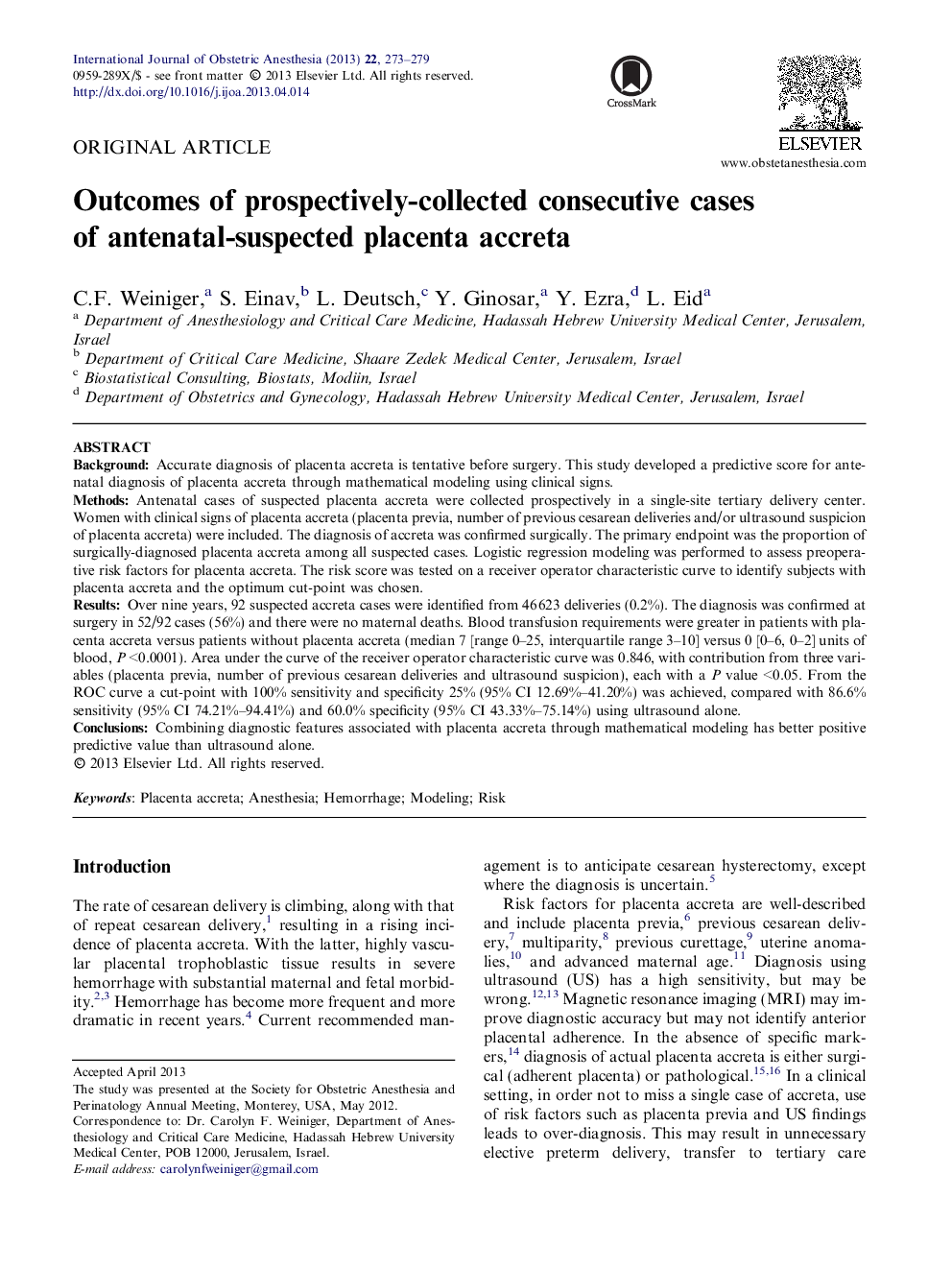| Article ID | Journal | Published Year | Pages | File Type |
|---|---|---|---|---|
| 2757803 | International Journal of Obstetric Anesthesia | 2013 | 7 Pages |
BackgroundAccurate diagnosis of placenta accreta is tentative before surgery. This study developed a predictive score for antenatal diagnosis of placenta accreta through mathematical modeling using clinical signs.MethodsAntenatal cases of suspected placenta accreta were collected prospectively in a single-site tertiary delivery center. Women with clinical signs of placenta accreta (placenta previa, number of previous cesarean deliveries and/or ultrasound suspicion of placenta accreta) were included. The diagnosis of accreta was confirmed surgically. The primary endpoint was the proportion of surgically-diagnosed placenta accreta among all suspected cases. Logistic regression modeling was performed to assess preoperative risk factors for placenta accreta. The risk score was tested on a receiver operator characteristic curve to identify subjects with placenta accreta and the optimum cut-point was chosen.ResultsOver nine years, 92 suspected accreta cases were identified from 46 623 deliveries (0.2%). The diagnosis was confirmed at surgery in 52/92 cases (56%) and there were no maternal deaths. Blood transfusion requirements were greater in patients with placenta accreta versus patients without placenta accreta (median 7 [range 0–25, interquartile range 3–10] versus 0 [0–6, 0–2] units of blood, P <0.0001). Area under the curve of the receiver operator characteristic curve was 0.846, with contribution from three variables (placenta previa, number of previous cesarean deliveries and ultrasound suspicion), each with a P value <0.05. From the ROC curve a cut-point with 100% sensitivity and specificity 25% (95% CI 12.69%–41.20%) was achieved, compared with 86.6% sensitivity (95% CI 74.21%–94.41%) and 60.0% specificity (95% CI 43.33%–75.14%) using ultrasound alone.ConclusionsCombining diagnostic features associated with placenta accreta through mathematical modeling has better positive predictive value than ultrasound alone.
